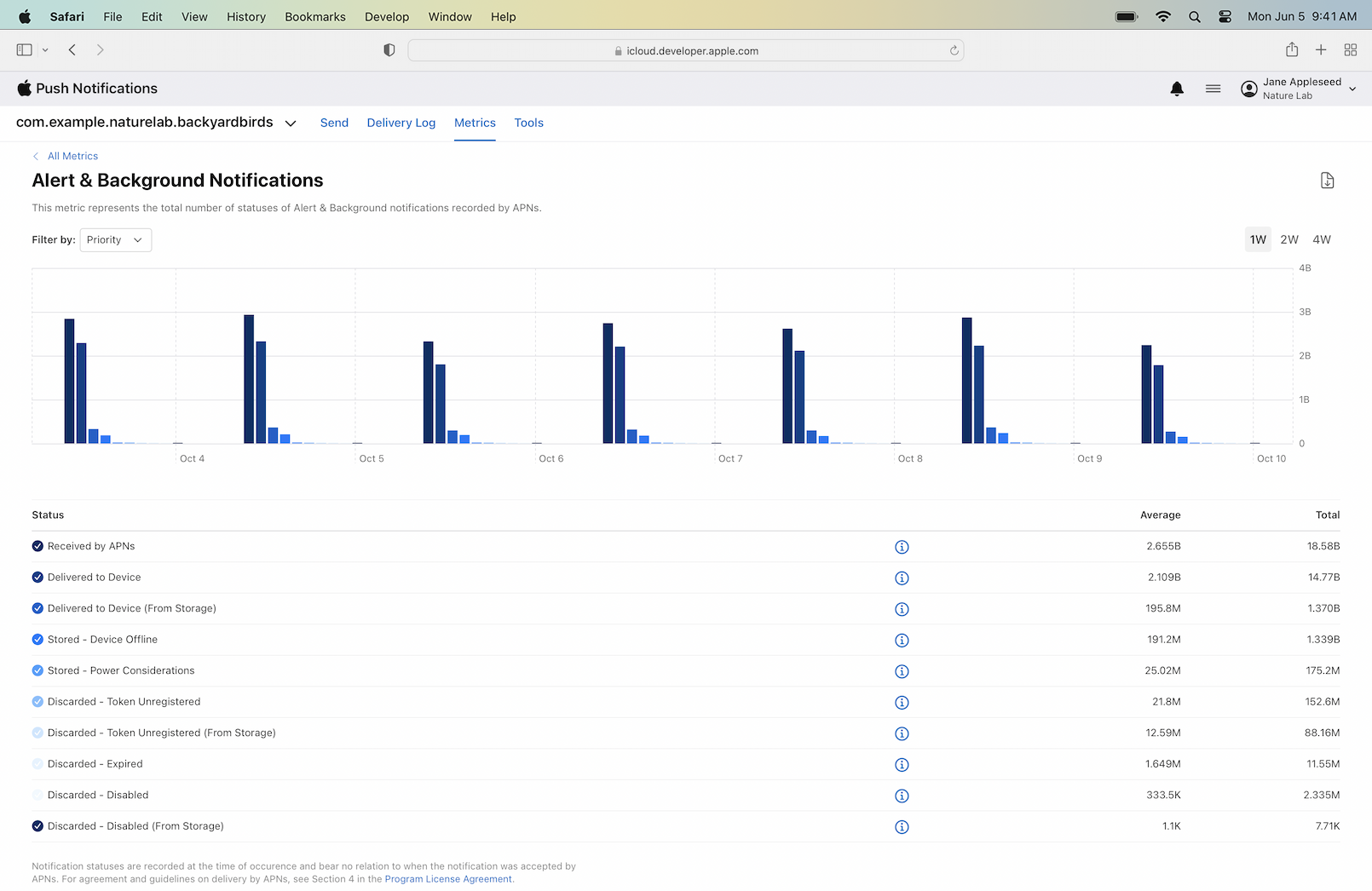A view of the new metrics panel in the push notification console. Screenshot by David Gewirtz/ZDNET
The average smartphone user receives around 46 push notifications per day, according to app analytics company Business of Apps (in the United States). Okay, let’s do the math: There are more than 1.46 billion active iPhone users worldwide. About 46 notifications multiplied by a billion and a half users, that’s about 67 billion notifications per day.
With so many messages being sent, it’s a good thing Apple has updated its notification management tools.
Although Apple iOS notifications have been around since 2009, it wasn’t until this year at WWDC that Apple introduced its Push Notifications Console, a tool developers can use to manage, debug, and test notifications.
Apple notifications are managed by the Apple Push Notification (APN) service
Yesterday, the company announced a new feature for this console: notification metrics. Apple explains that developers can now get an “aggregated view of delivery statuses and an overview of various notification statistics, including a detailed breakdown based on push type and priority.”
Notifications provide real-time updates from apps and websites directly to the user’s iOS device, providing useful information to the user and increasing engagement and overall usage of the app. application. Many users rely on our notifications to stay in touch or manage important projects.
Apple notifications are managed by the Apple Push Notification (APN) service. When an app interacts with you for the first time, it asks your permission to send you notifications. If you agree, a unique token is generated by the APNs and sent to your device. This token identifies you and allows you, and you alone, to receive your notifications. The token is then registered with the application server used by the application developer to manage the application’s online presence.
Test notifications without having to make them work in code first
When an app wants to send a notification, its app server sends a request to the APNs with the token ID, then the APNs handle the delivery to your device. This is a fairly simple, but solid, mechanism.
With the Push Notifications Console, developers can test notifications without having to make them work in code first. They can then develop their notifications, see how they work on devices and test them – and only then code the interface into their application. This can save considerable time.
A second key feature introduced at this year’s WWDC is the ability to review notification delivery logs, which helps developers understand why a notification was not delivered. This can be very useful, not only during the development phase, but also after application deployment, if it turns out that the expected notifications are not seen by users.
Test and generate authentication keys
The Push Notifications Console also provides tools to test and generate authentication keys, and verify the validity and scope of individual tokens assigned between an app and a given device.
Now, with the addition of notification metrics to the console, developers can receive information by time period, day, week, or month. Details on average and total notifications recorded by APNs are as follows:
- Received by the APNs
- Delivered to the device
- Delivered to device (from storage)
- Stored – Offline Device
- Stored – Feeding Considerations
- Rejected – Token not registered
- Rejected – Token not saved (from storage) Rejected – Expired
- Rejected – Disabled
- Rejected – Disabled (from storage)
This data can be very useful for developers, as it allows them to see how their notifications are processed between APNs and users’ devices.
Apple’s push notification console is available to anyone registered as a developer in the Apple Developer program.
Source: “ZDNet.com”
